

 |
Search the Site with

|
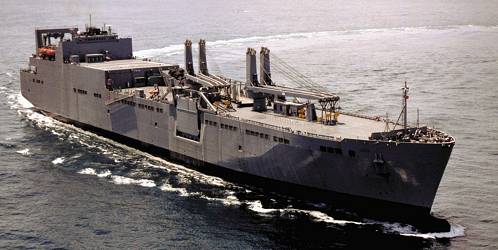 | Sorry, no coat of arms available. |
USNS WATSON is the first ship in a class of eight large, medium-speed, roll-on/roll-off ship (LMSR) and the first ship in the Navy named after Pvt. Watson.
| General Characteristics: | Awarded: September 15, 1993 |
| Keel laid: May 23, 1996 | |
| Launched: July 26, 1997 | |
| Delivered: June 23, 1998 | |
| Builder: National Steel and Shipbuilding, San Diego, CA | |
| Propulsion system: two GE Marine LM gas turbines | |
| Propellers: two | |
| Length: 951.4 feet (290 meters) | |
| Beam: 106 feet (32.3 meters) | |
| Draft: 34.1 feet (10.4 meters) | |
| Displacement: approx. 62,970 tons full load | |
| Speed: 24 knots | |
| Aircraft: helicopter landing area only | |
| Armament: none | |
| Capacity: 393,000 sq. ft. (more than 900 vehicles including tanks and trucks) | |
| Crew: 26 civilian crew (up to 45); up to 50 active duty | |
| Homeport: not assigned |
Crew List:
This section contains the names of sailors who served aboard USNS WATSON. It is no official listing but contains the names of sailors who submitted their information.
About the Ship's Name:
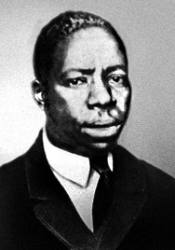 USNS WATSON is named in honor of U.S. Army Pvt. George Watson of Birmingham, Ala., who was awarded the Medal of Honor, the nation's highest military award.
USNS WATSON is named in honor of U.S. Army Pvt. George Watson of Birmingham, Ala., who was awarded the Medal of Honor, the nation's highest military award.
Private George Watson was from Birmingham, Alabama, and a member of the 29th Quartermaster Regiment. Watson drowned rescuing others when his ship was sunk by Japanese bombers near Porloch Harbor, New Guinea, on March 8, 1943.
Private Watson was the first black solider to receive the Distinguished Service Cross during World War II. He was 28 years old, had been drafted into the Army and was assigned to the 29th Quartermaster Regiment.
Watson's ship was damaged so badly by Japanese bombs that everyone was ordered overboard. Watson remained in the water and helped other soldiers who could not swim reach the life rafts. It is thought that Watson was unable to get clear of the turbulence when the ship went down, and he disappeared beneath the waves. Watson is remembered on a memorial at the Manila American Cemetery, a Memorial in the Philippines and by George Watson Memorial Field at Fort Benning, Ga.
Around 1.2 million African-Americans served in World War II, but none received the Medal of Honor during or after that war. In the late 1990's the Army conducted a three year long review of the records of 10 World War II black heroes to determine if they met the standards for the Medal of Honor. Of these, seven names were submitted to Congress and the President.
At a crowded White House ceremony on 13 January 1997, President William J. Clinton bestowed the Medal of Honor on these seven African American veterans of World War II. Only one of the newest recipients, 77-year-old Vernon J. Baker, a platoon leader with the 92nd Infantry Division was still alive to receive his award in person. The others had died during the war or in the decades since and were represented by next of kin.
The honorees, as might be expected, mainly served with combat arms units – infantrymen, tankers, forward observers, and the like – with one notable exception. Private George Watson, of Birmingham, Alabama, was a Quartermaster soldier. He was also the only one of the seven to earn his medal while serving in the Pacific Theater.
Private Watson joined the Army in September 1942, completed his initial entry training at Fort Benning, GA, and was assigned to the 2nd Battalion, 29th Quartermaster Regiment, bound for the Pacific Theater when he met his untimely demise. His unit was onboard the Dutch Steamer USAT JACOB near Porloch Harbor, New Guinea, on 8 March 1943, when suddenly they came under devastating attack by Japanese bombers.
After sustaining several direct hits, the ship had to be abandoned, even as enemy fire continued to rain down. For many of those left floating helplessly in the water, not knowing how to swim or too injured to help themselves, and paralyzed by fear, survival appeared unlikely. It was at that precise moment and under those very harrowing circumstances that Private Watson demonstrated the utmost courage under fire.
Since Private Watson has no known next of kin his Medal of Honor resides in the U.S. Army Quartermaster Museum, Fort Lee, Virginia.
Forsaking any thought of his own safety, he swam back and forth across that deadly scene, dragging his hapless comrades to the few available life rafts that they might live. "Over and over and over again," as the President made note in his remarks, Private Watson continued saving others, "until he himself was so exhausted, he was pulled down by the tow of the sinking ship."
USNS WATSON Construction Gallery:
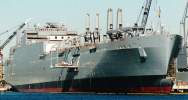 | 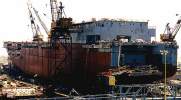 | 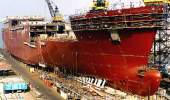 |
USNS WATSON Image Gallery:
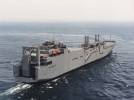 |
The photo below was taken by Stefan Karpinski and shows the WATSON being escorted through Bab El Mandeb by the German frigate MECKLENBURG-VORPOMMERN (F 218) during Operation Enduring Freedom in 2003.
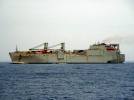 |
The photos below were taken by Michael Jenning and show the WATSON at Naval Base Norfolk, Va., on September 21, 2018.
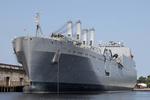 | 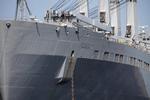 |  | 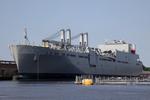 |
The photos below were taken by Michael Jenning and show the WATSON at Naval Base Norfolk, Va., on December 26, 2021.
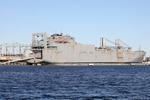 | 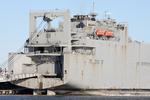 |  | 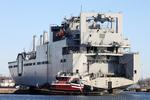 |
 Back to Vehicle Cargo Ships.
Back to Vehicle Cargo Ships.  Back to ships list.
Back to ships list.  Back to selection page.
Back to selection page.  Back to 1st page.
Back to 1st page.